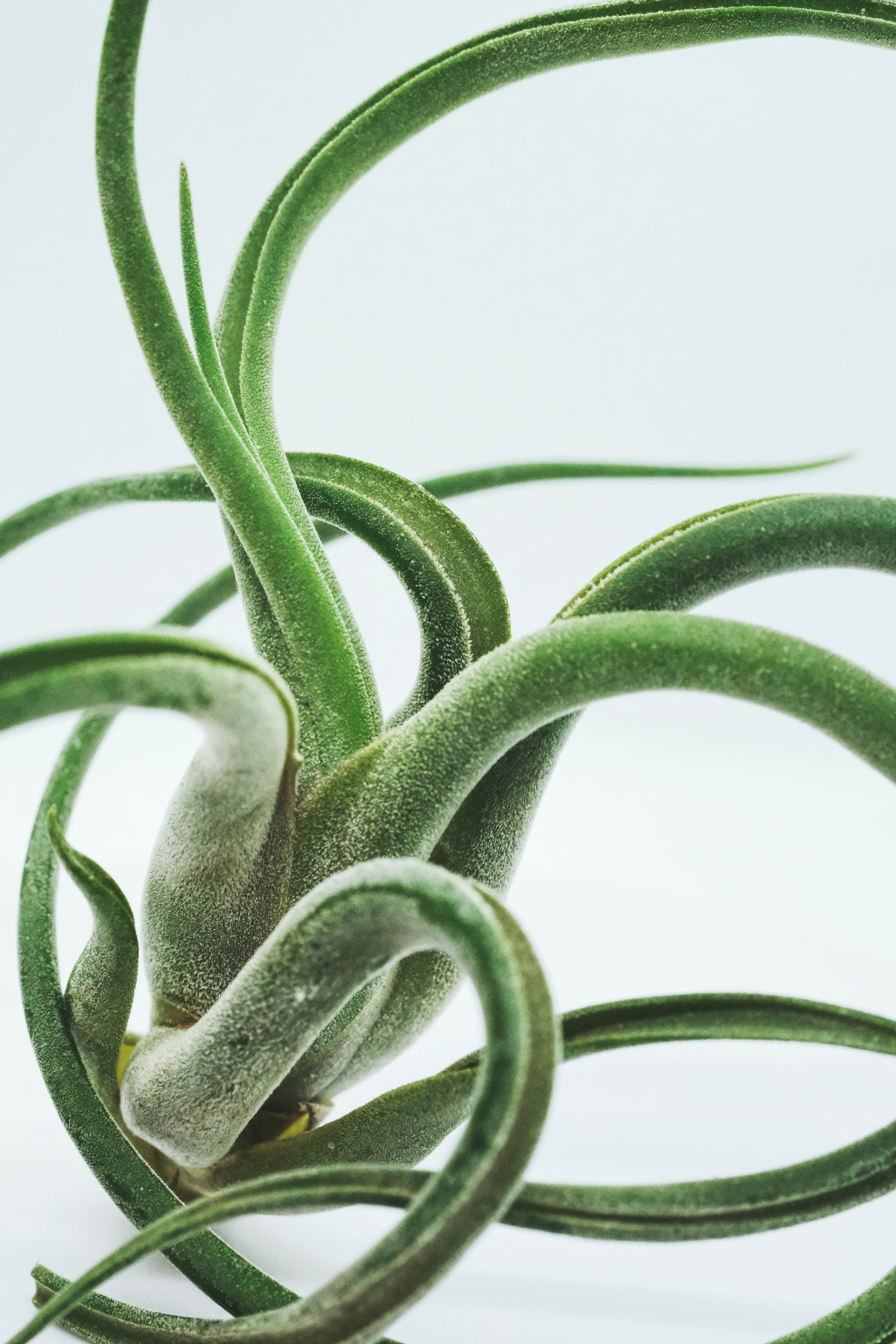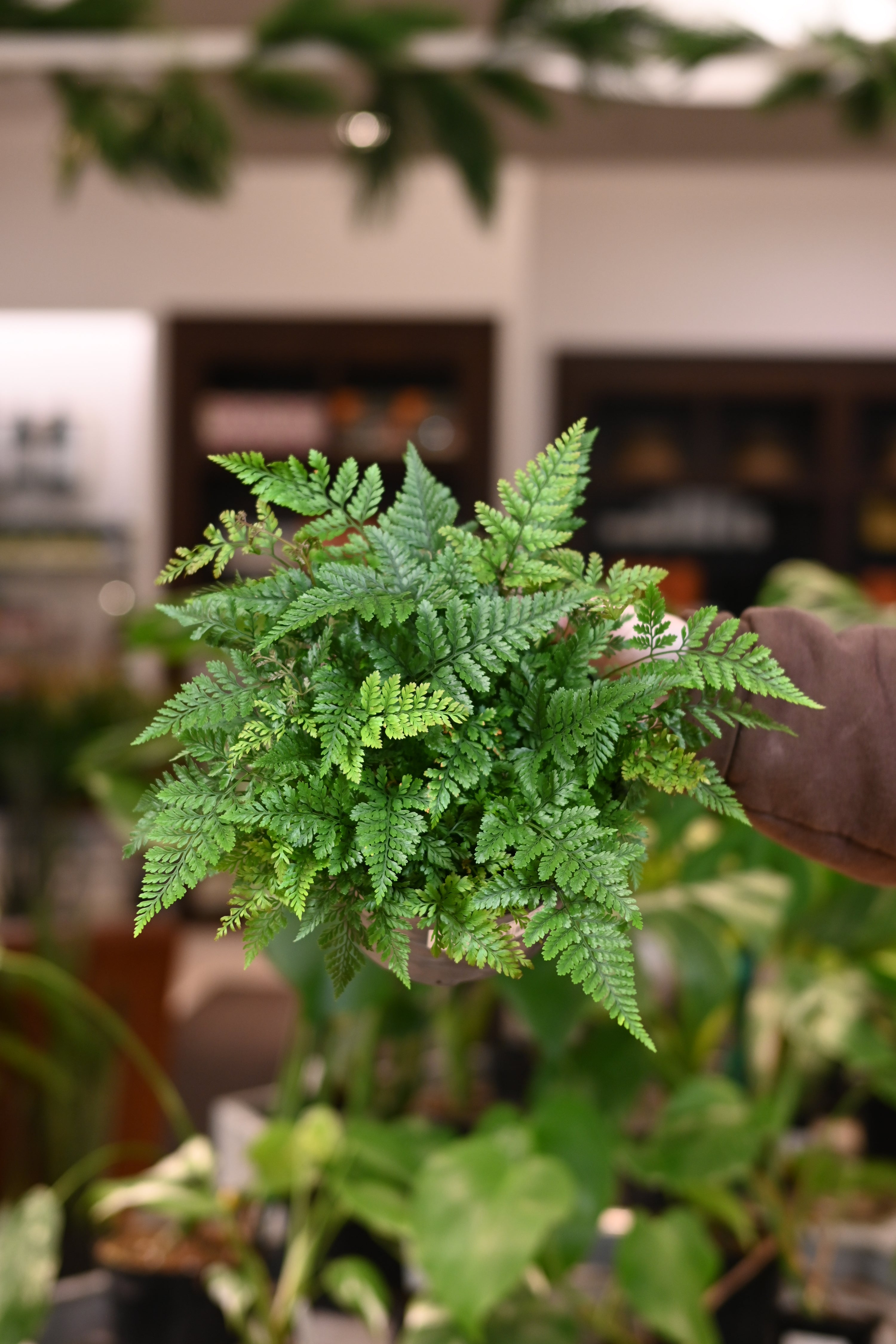
Have you ever witnessed plants thriving without soil? Look no further, because we're about to dive into the world of epiphytes, also known as air plants. These whimsical wonders will add a touch of enchantment to your indoor jungle. Get ready to elevate your green game and become the ultimate air plant aficionado.
Bonus: Epiphytes are non-toxic to pets!

What is an Epiphyte?
Picture this: a plant that thrives without being rooted in soil, using its aerial roots to cling to tree branches, rocks, or any elevated surface. That's the essence of an epiphyte! These free-spirited plants absorb moisture and nutrients from the air and rain, making them true masters of survival. Think of them as nature's acrobats, performing their aerial feats with grace and style.
The term epiphyte is translated from the Greek (epi = on top of; phyte = plant). Epiphytes or ‘air plants’ are plants that grow on top of other plants (typically trees). Air plants grow without soil, but may grow in some substrate such as leaf debris or moss caught in between tree branches. To acquire nutrients without soil can be a struggle, but because they do not interact with soil, many epiphytes have different adaptations for surviving their nutrient-poor conditions.
Types of Epiphytes
Like succulents, epiphytes are not necessarily related to one another and many unrelated plants are epiphytes. Remember, “epiphyte” refers to the growth form, not the relatedness of these plants. Below are some of the most common types of epiphytes.
-

Orchids
Shop OrchidsEpiphytes include some of the most captivating orchid species. From the ethereal Phalaenopsis to the enchanting Cattleya, these floral wonders showcase a stunning array of colors, shapes, and fragrances.
-

Bromeliads
Shop BromeliadsBromeliads, a popular group of epiphytes, offer an incredible diversity of forms and colors. They range from the iconic Cryptanthus to the striking Tillandsia species, which often don't require soil at all.
-

(Select) Ferns
Shop FernsWhile not all ferns are epiphytes some ferns such as Rabbit Foot, Staghorn or Platycerium Elephantotis Fern are epiphytic and can be grown either terrestrially (in soil) or epiphytically (mounted or soilless).
Epiphyte Care
- Light: Most epiphytes prefer bright, indirect light. Place them near a window with filtered light or provide them with bright artificial lighting. Avoid direct sunlight, as it can scorch their delicate leaves.
- Watering: Epiphytes have unique water needs. Instead of watering the soil, focus on providing moisture to their leaves and roots. Mist your plants regularly to increase humidity, or place them in a humidity tray filled with water and pebbles. Another technique (preferred for air plants) is soaking them in water for a short period and allow excess water to drain before returning them to their display.
- Temperature and Humidity: Epiphytes generally thrive in warm and humid conditions. Aim for a temperature range between 65-80°F (18-27°C). If your home is dry, consider using a humidifier or placing a tray of water near your plants to boost humidity levels.
- Potting Medium: Epiphytes typically don't require soil. Instead, use a well-draining medium such as orchid bark, sphagnum moss, or a specialized epiphyte mix. These materials allow air circulation around the roots and prevent waterlogged conditions.
- Resting Periods: Some epiphytes go through natural rest periods or dormancy. Research the specific needs of your plant to determine if it requires reduced watering or a cooler period during certain times of the year.
- Research and Learning: Each species of epiphyte may have unique care needs. Take the time to research and understand the specific needs of your plants.
Creative Ways to Showcase Epiphytes Indoors
When it comes to displaying your epiphytes, the sky's the limit! Here are a few creative ideas to showcase these aerial wonders:
Mounting Magic: Attach your air plants to pieces of driftwood, cork, or even decorative rocks using non-toxic glue or fishing line. Let your imagination soar as you create stunning living art pieces.
Hanging Gardens: Use macrame hangers, terrariums, or wire baskets to suspend your epiphytes from the ceiling. It's like having a mesmerizing green chandelier floating in mid-air.
Miniature Worlds: Create tiny landscapes by placing your air plants amidst pebbles, moss, and miniature figurines. Let your epiphytes become the stars of their own magical kingdoms.
So, whether you're captivated by the delicate blooms of orchids or intrigued by the resilience of bromeliads, exploring the world of epiphytes will add a touch of magic and wonder to your indoor plant collection. Embrace these airborne marvels and let them inspire your green thumb adventures!
Until next Tuesday...... GET LOST!










